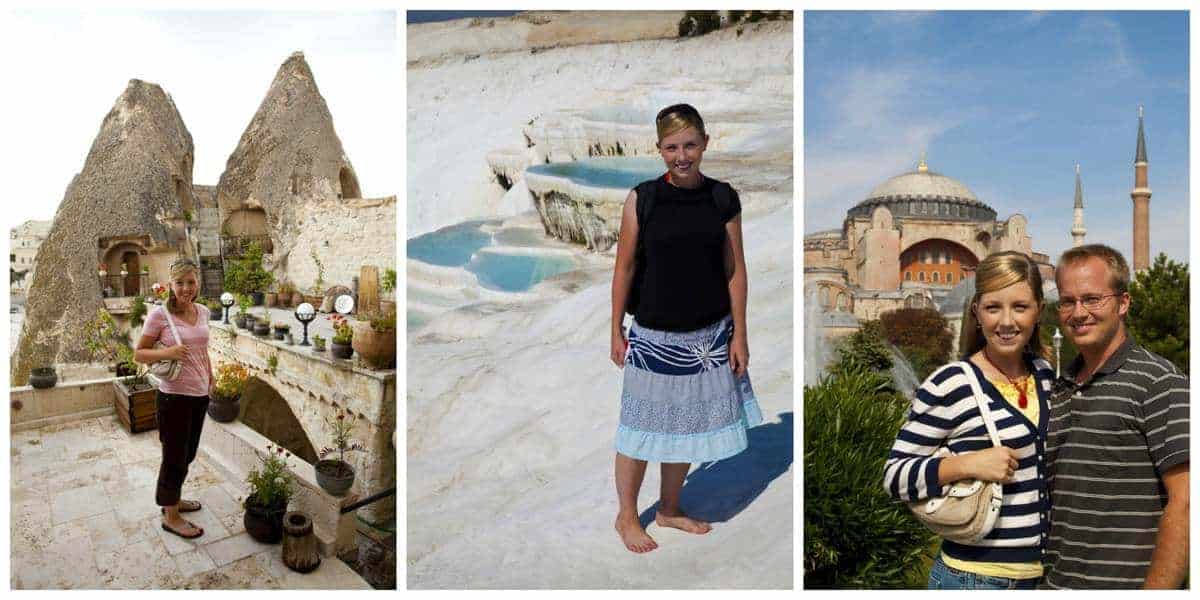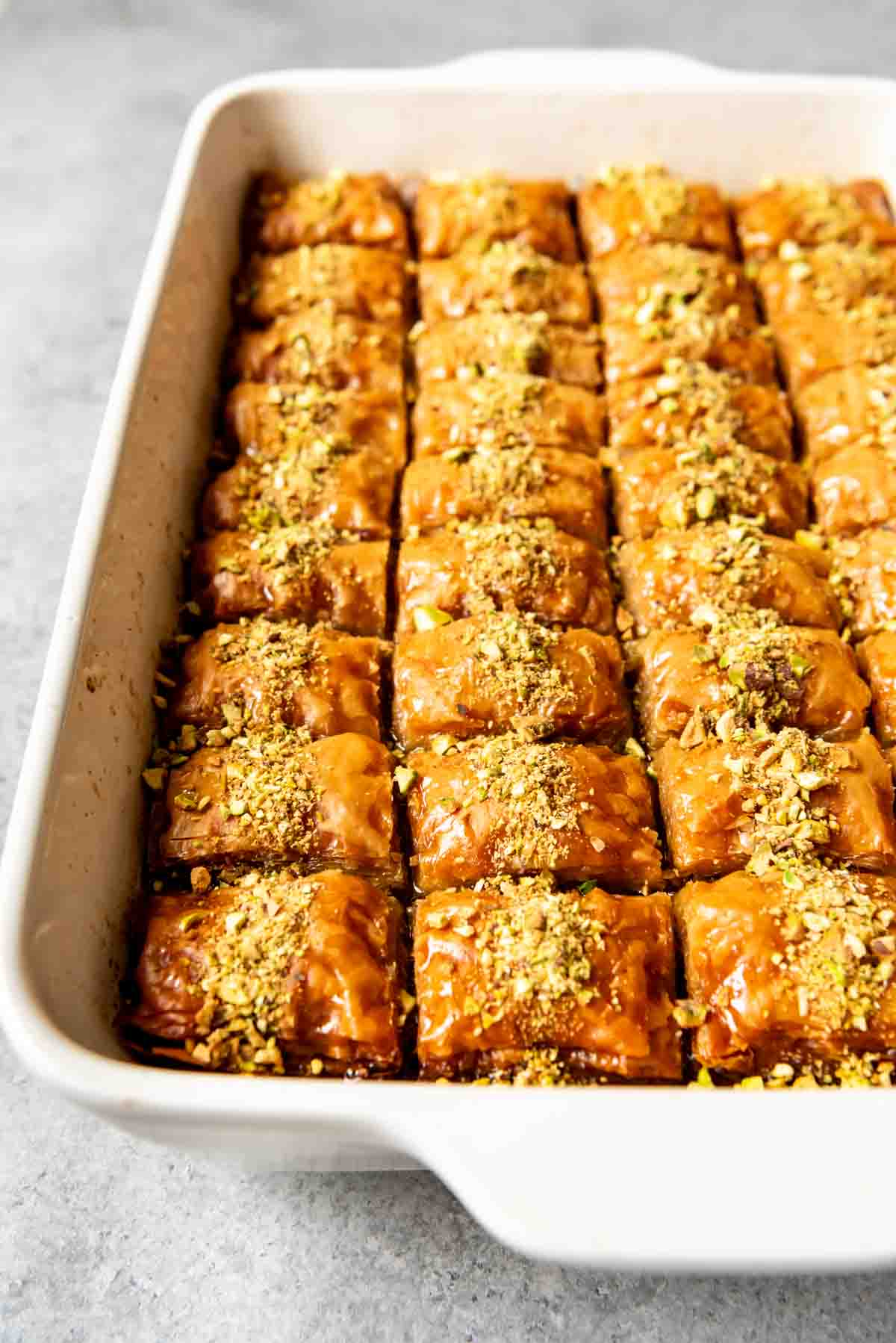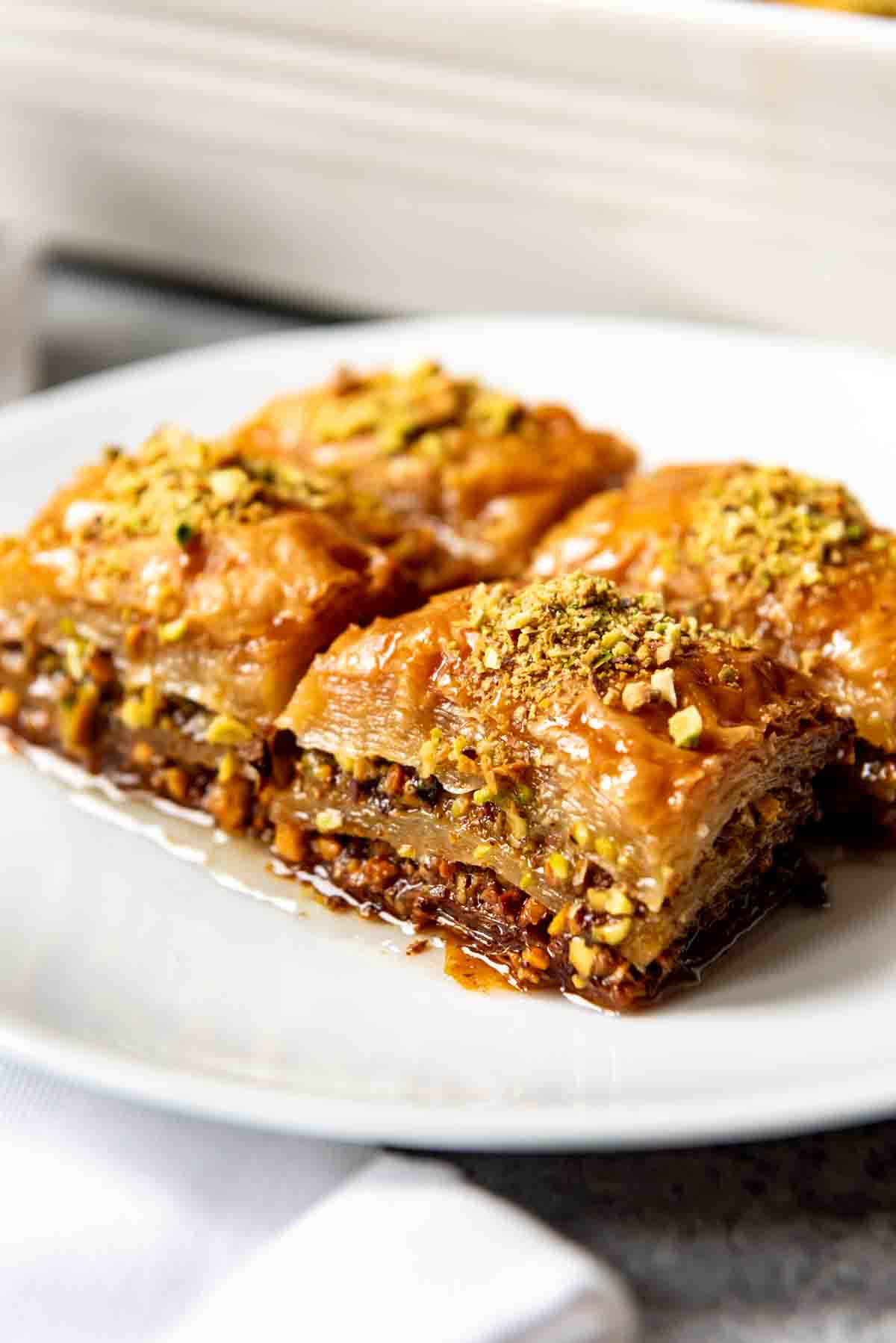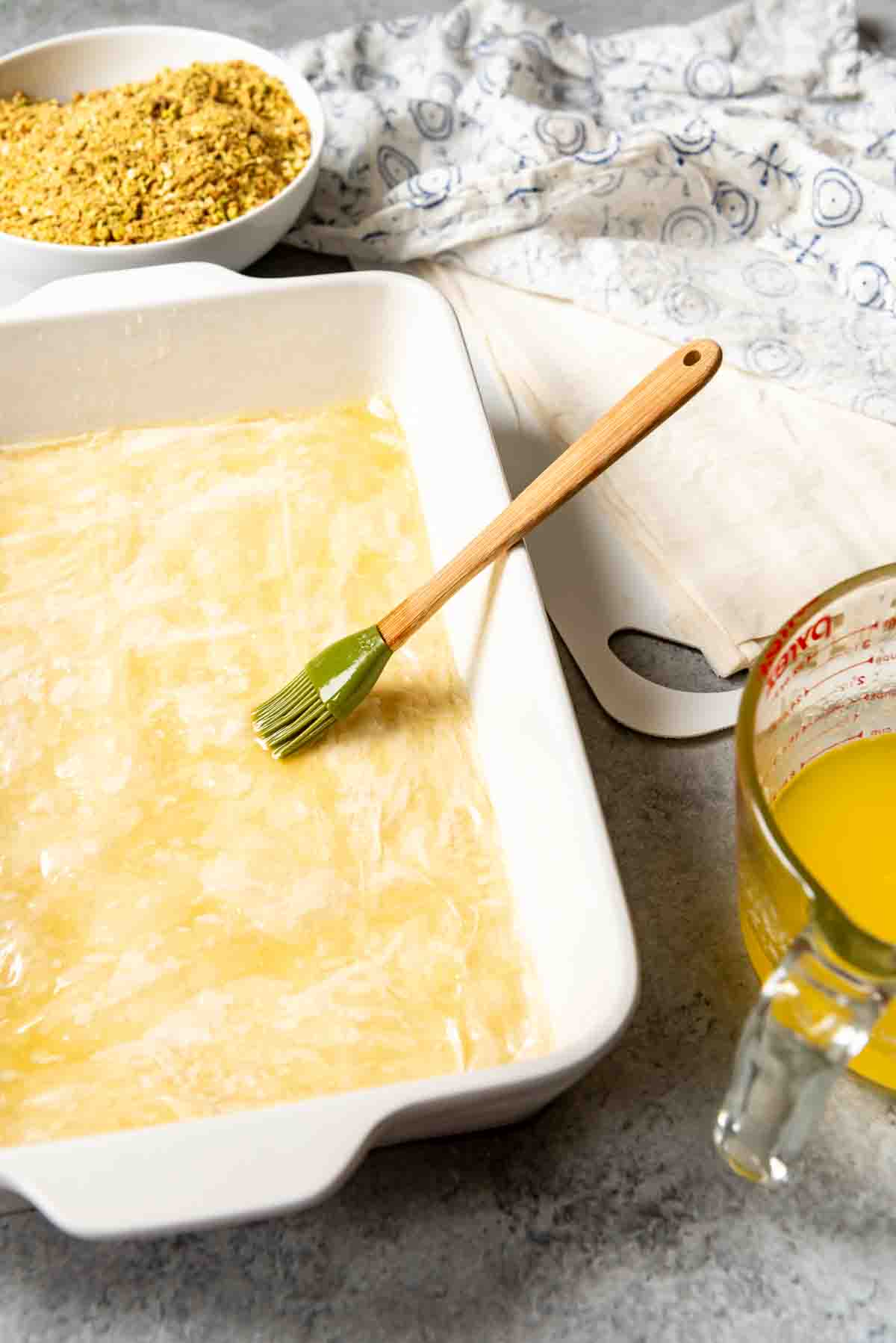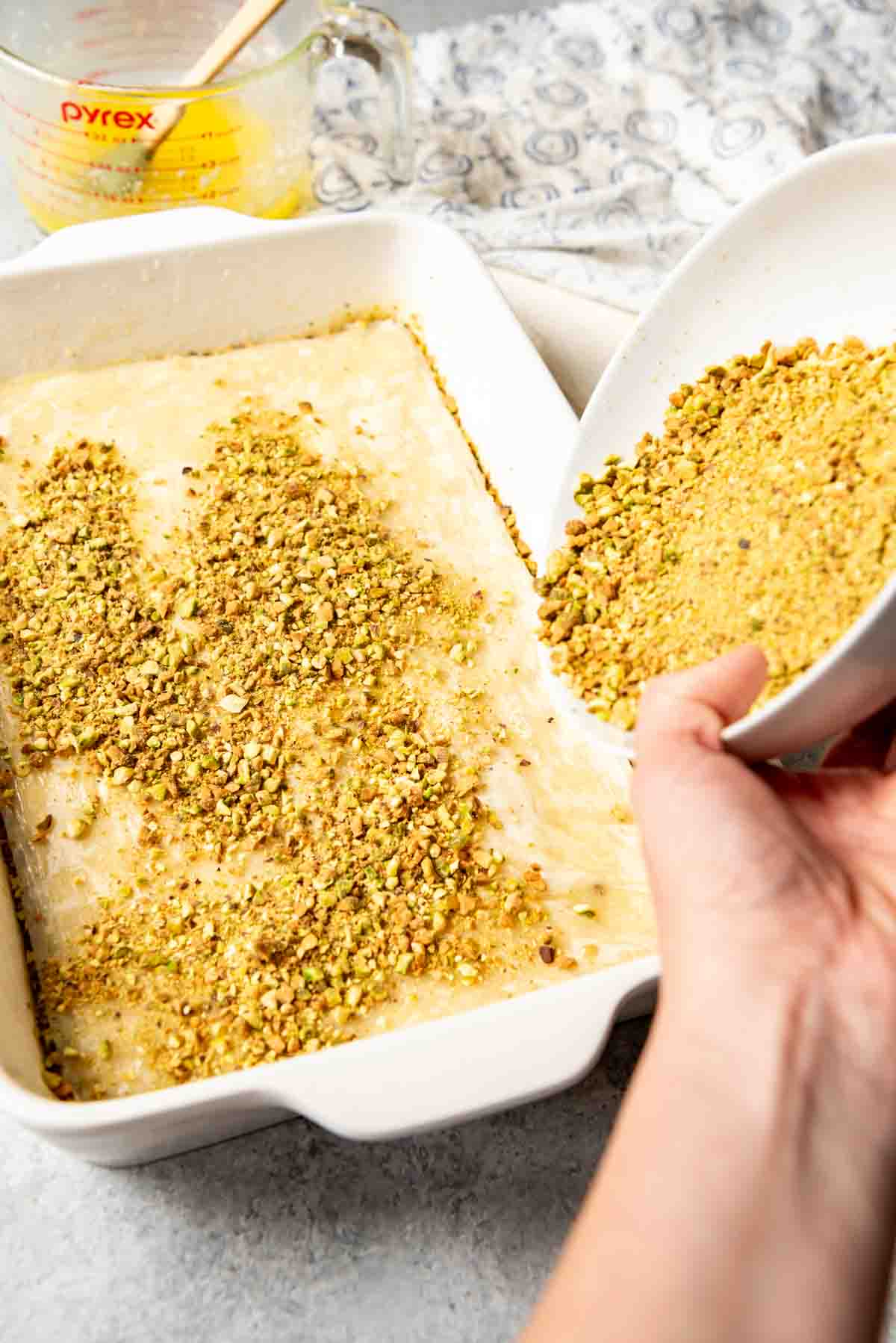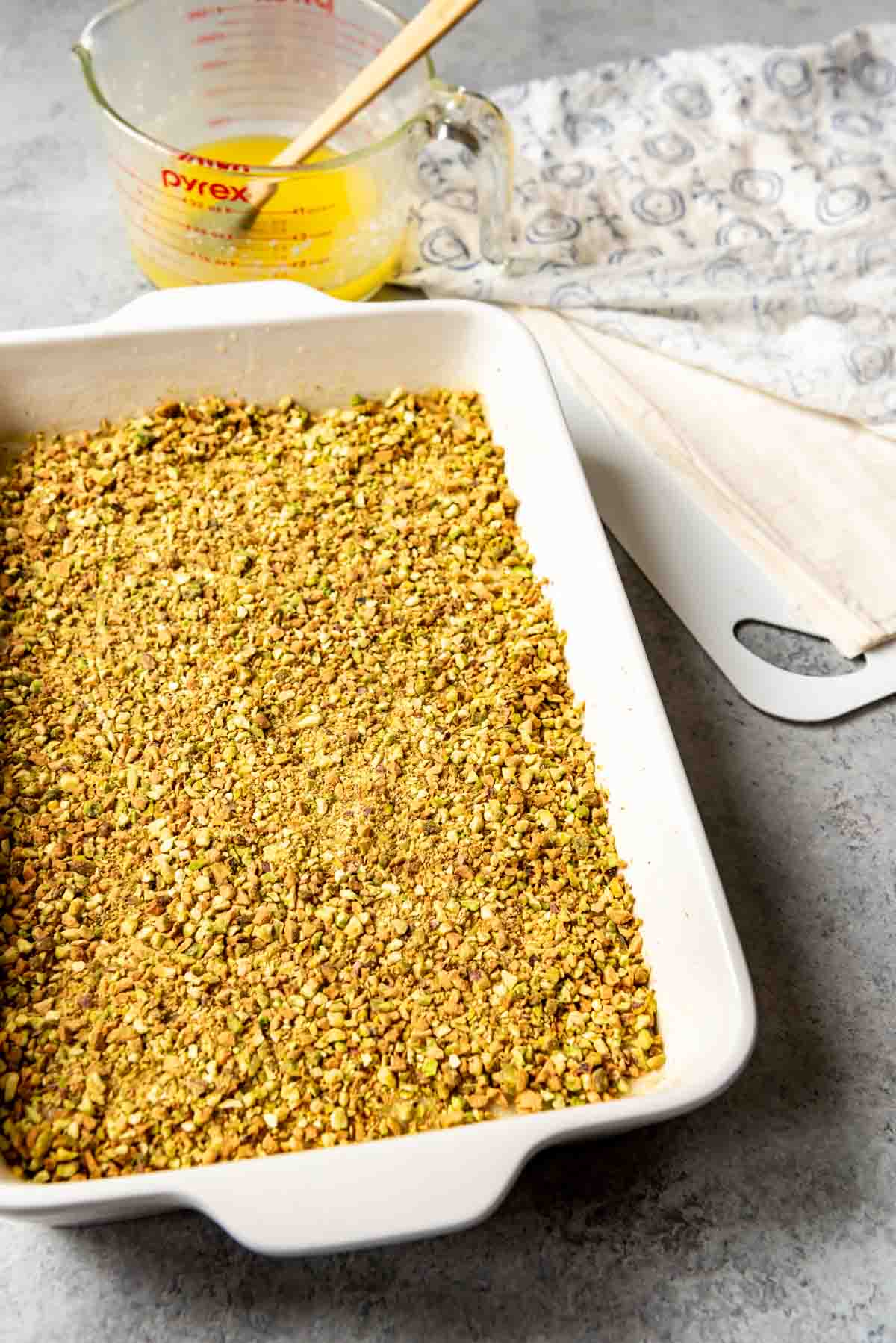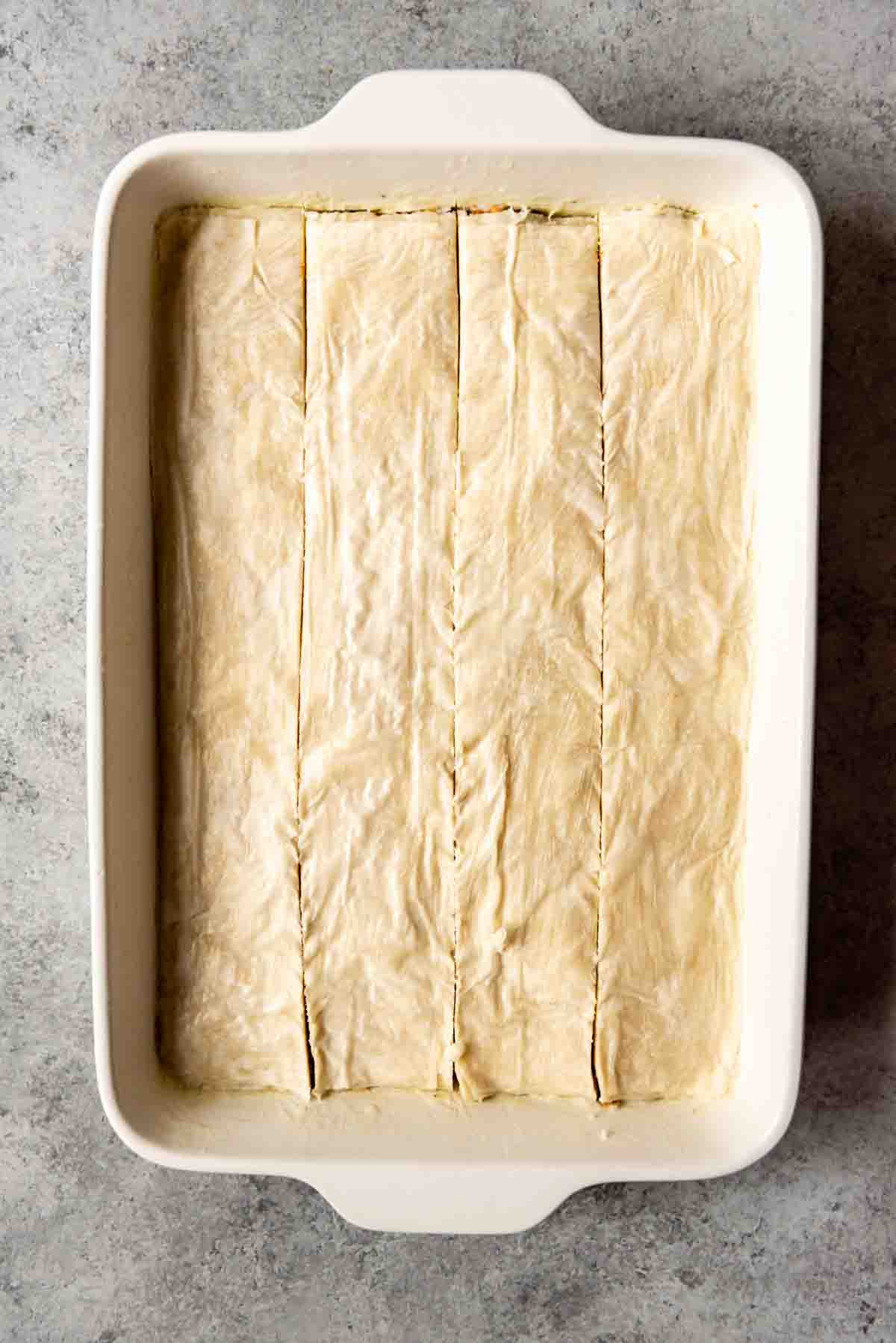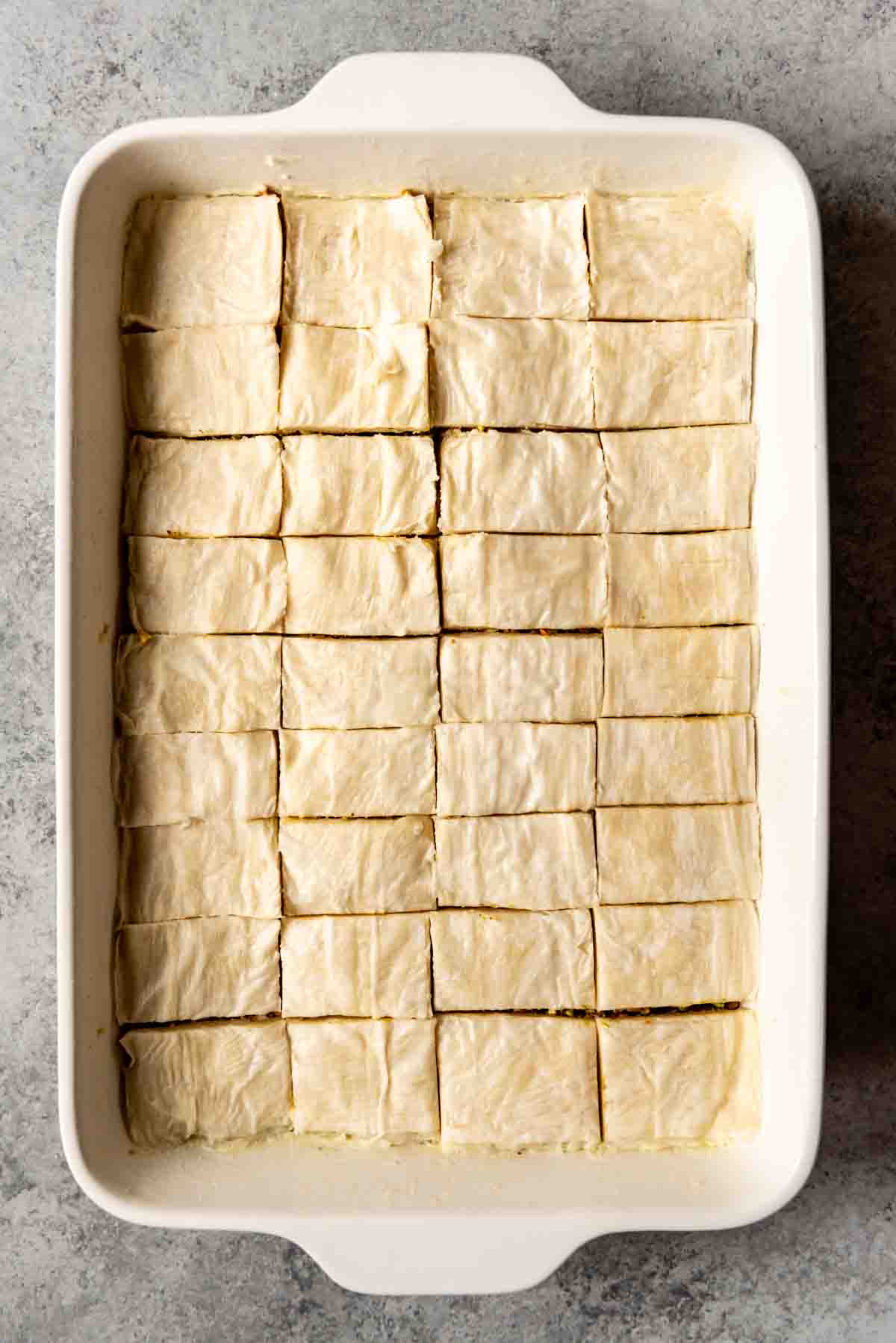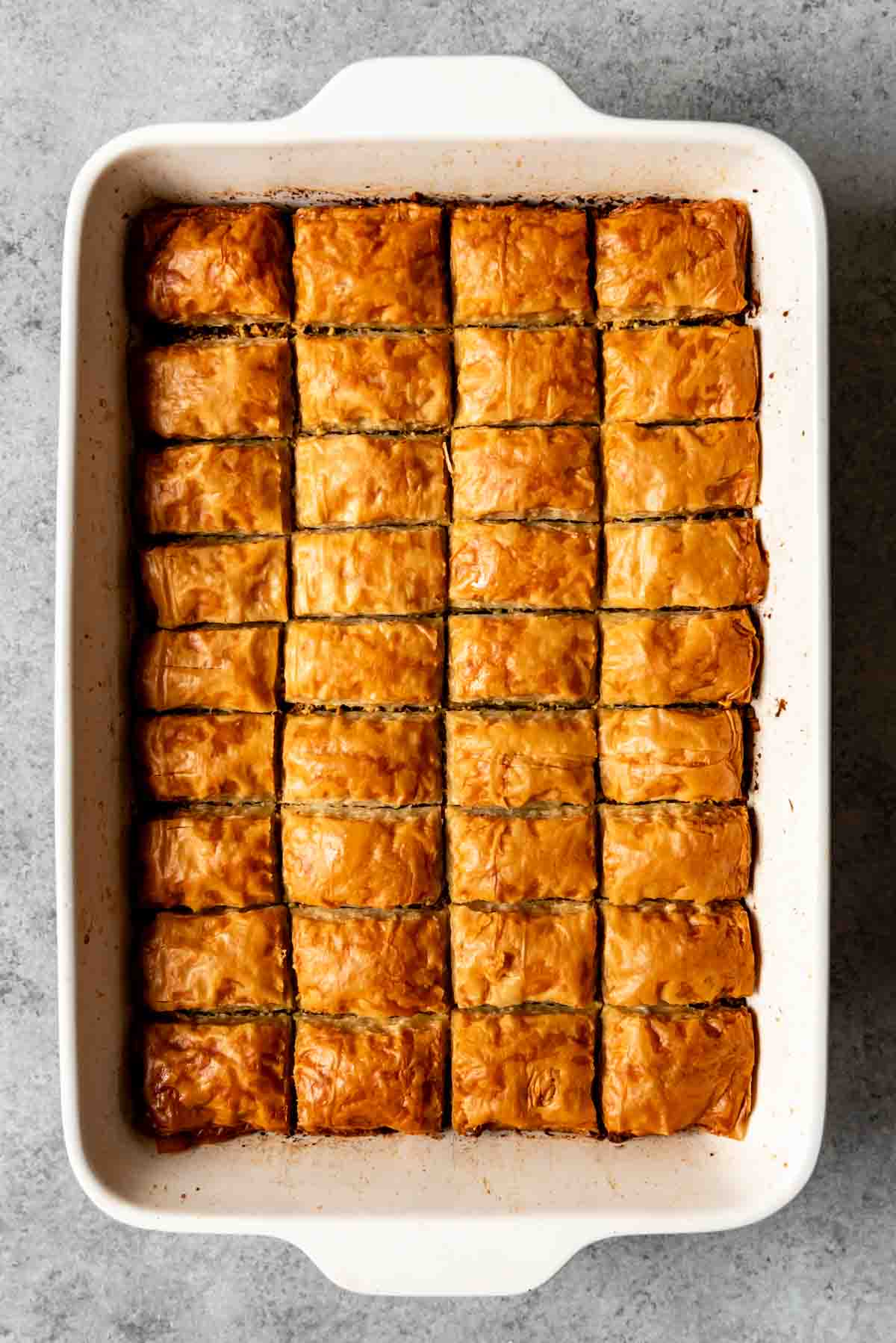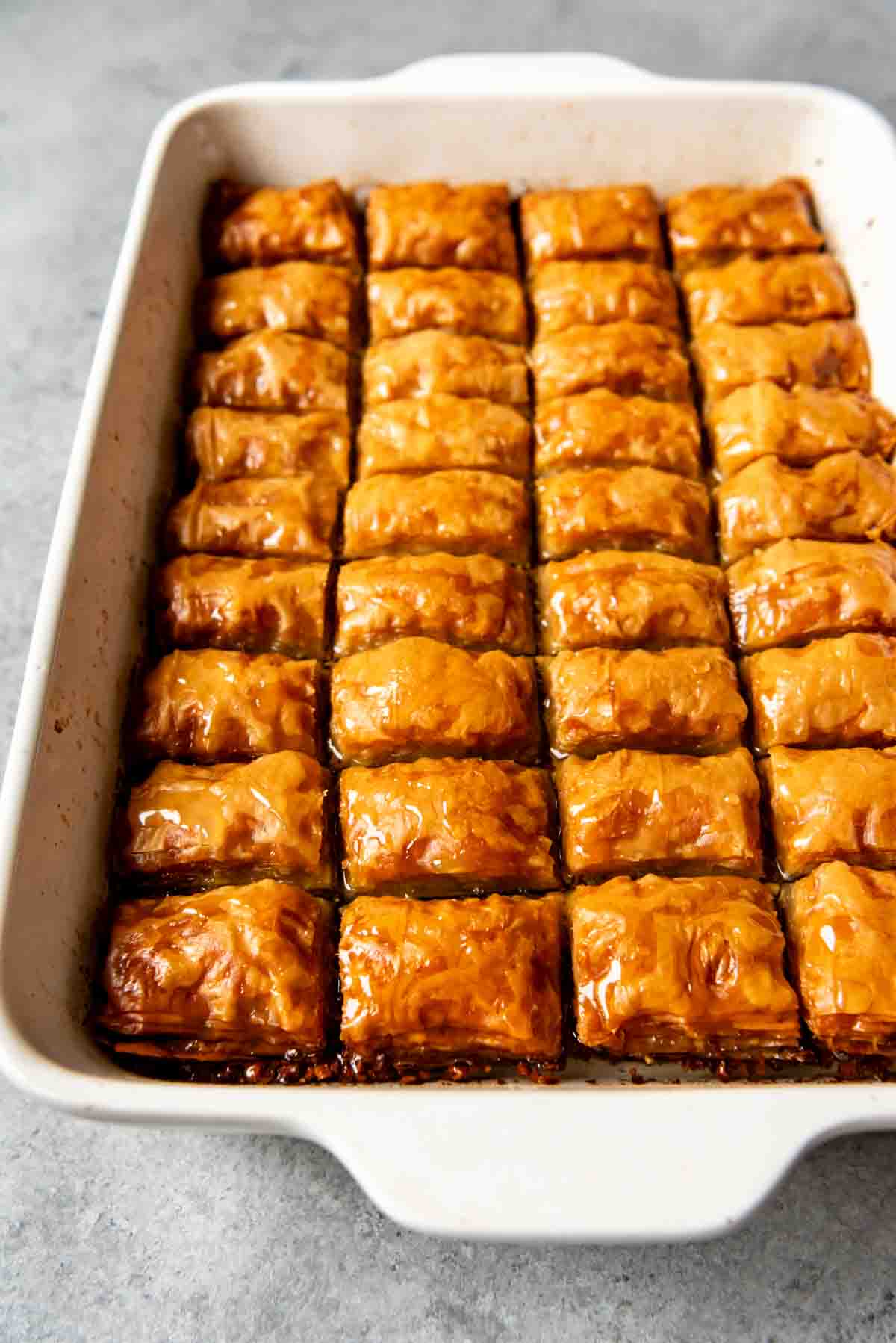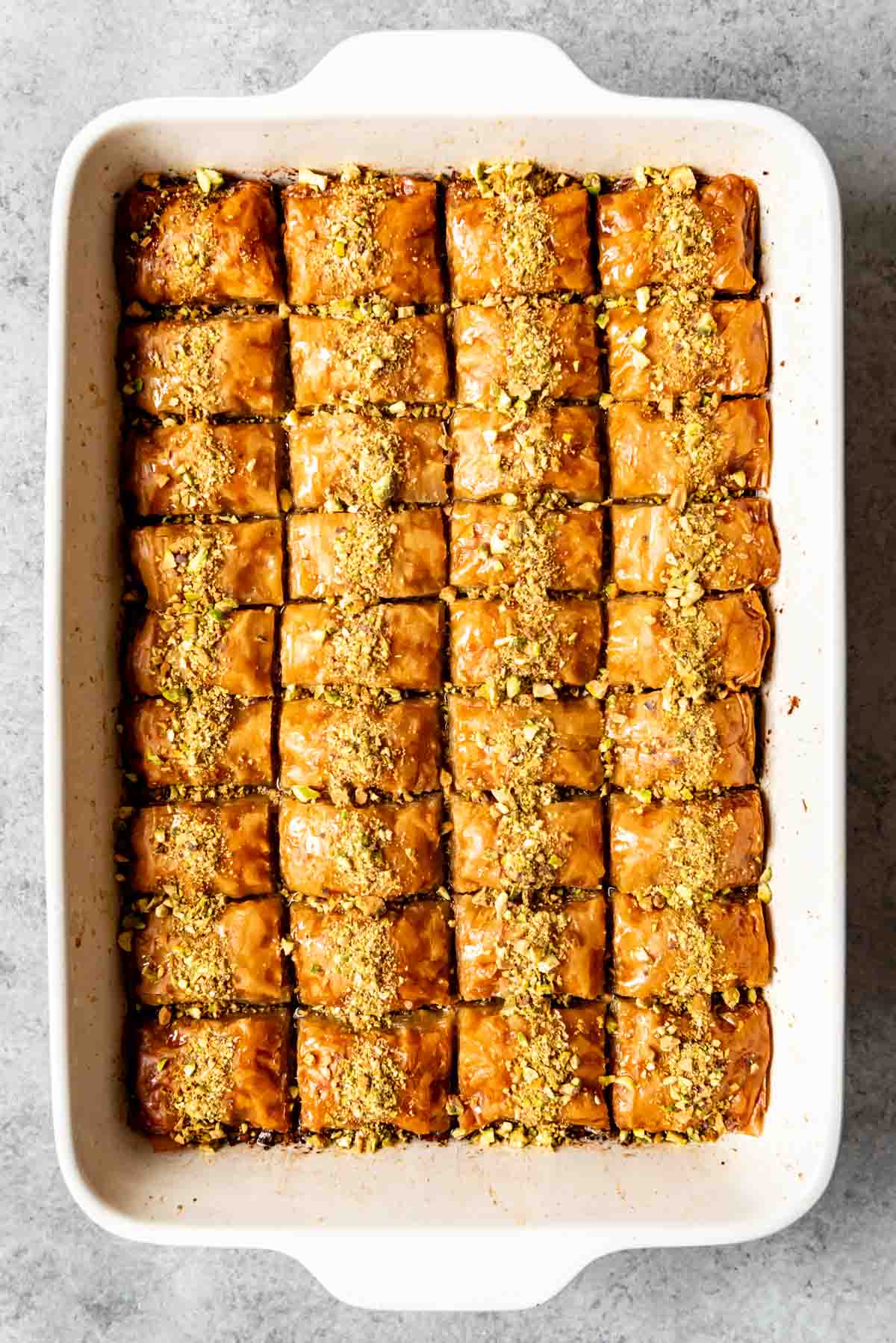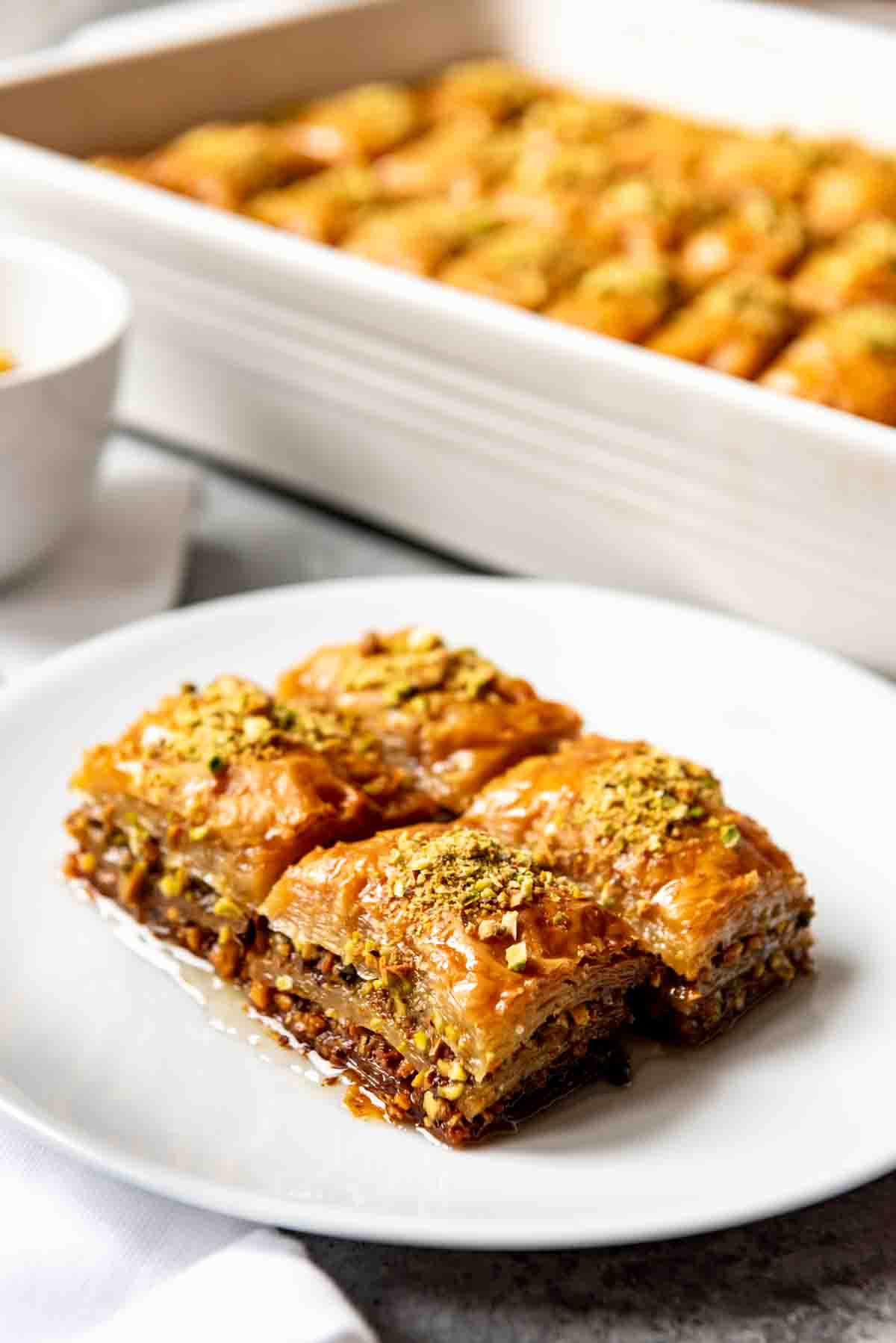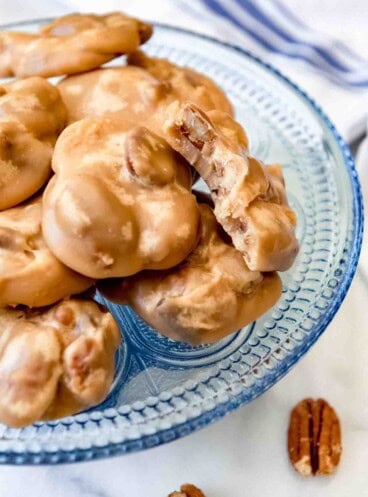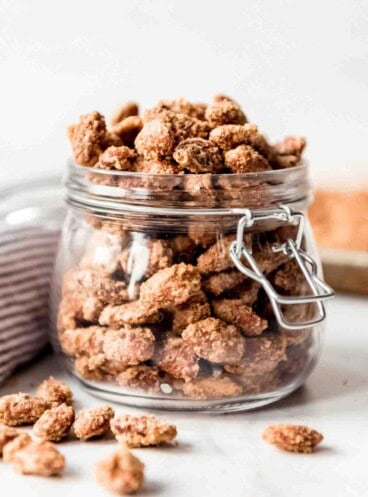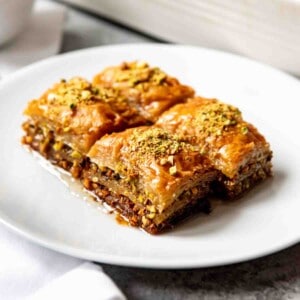Last year during Christmas Cookies Week, I shared a Greek baklava recipe, which we LOVED. And apparently you did as well, because I had so many readers come to my site for that post! It’s full of walnuts and sweetened with a honey syrup and is just so, SO good. But this year, I thought I would make this Turkish baklava recipe to showcase some of the similarities and differences between the recipes! Right after graduating law school and taking the California bar exam, Paul and I took off on a backpacking trip around parts of Europe, Asia, and Africa. Two of the countries we stopped in were Greece and Turkey. We loved them both deeply, and are agreed that Turkey, especially, is one of our favorite countries we have ever visited. Let’s throw it back with a photo collage of three of my favorite spots in Turkey – Cappadocia, Pammukale, and Istanbul. Without going too deep into history and culture, one thing we learned while we were traveling between the two countries is that their history has been fraught with confrontation and there has been fighting between the two for centuries. It was more than a little awkward a time or two when guides from either country would start openly criticizing the other country and giving a very skewed account of the history of what had happened between the neighboring countries during periods of time. But there have been periods where many Greeks have lived in Turkey and many Turks have lived in Greece, and there has been crossover between them. Enter baklava.
Greek Baklava vs. Turkish Baklava
I don’t think anybody really knows where it was invented or who, really, can claim ownership over it. But I know that both countries have strong baklava traditions that even vary within the country from place to place. So I’m aware that I’m somewhat over-generalizing here by saying that Greek baklava uses honey, walnuts, and cinnamon, while Turkish baklava uses a sugar syrup, pistachios, and lemon juice without the addition of spices or other flavors. Good baklava is sweet, but not cloying, and moist, but not soggy, regardless of where it’s from (although I do think that Turkish baklava is typically more wet than Greek baklava in my experience). There are also differences in how the baklava is cut and presented, but for the sake of keeping things simple, let’s just go with the distinctions I’ve already made. Is that okay? If you enjoy baklava, I think you would also love these other nutty desserts! Be sure to check out our Candied Almonds, Maple Walnut Ice Cream, and Burnt Almond Cupcakes.
Pistachio Baklava
When it comes to Turkish baklava, I strongly feel that pistachio nuts are the way to go. I just love their flavor and vibrant green color that is so unlike any other nut! Sure, some places in Turkey use almonds, or a combination of pistachios and walnuts, but from what I have seen and read, it really seems like classic pistachio baklava is the way to go if you are trying to create authentic Turkish baklava. Turkish baklava is also unique in that it doesn’t use any honey as a sweetener or to provide flavor. Instead, a thick syrup is made from nothing more than sugar, water, and a little lemon juice, which adds both flavor and helps prevent crystallization of the sugar. But besides those two major distinctions, baklava from either country is similar. It’s made from thin phyllo dough that is layered in a large baking dish one sheet at a time, brushing melted clarified butter between each sheet to build up the distinctive flaky texture that baklava is known for. 8 to 10 sheets of butter-brushed phyllo build the base of the baklava in the pan, then a good amount of finely chopped nuts is spread evenly before topping with another 8 to 10 sheets of phyllo and butter, more nuts are added, and the remaining phyllo is added to finish things off. It’s a little different from how I layer my Greek baklava where I do more layers of nuts between fewer layers of phyllo, but both approaches work equally well.
How to Make Turkish Baklava
How to Make Clarified Butter
This recipe calls for clarified butter, which is just melted butter that has the milk solids (the foam on top and the white solids at the bottom) removed. I actually don’t know that I notice a difference between using clarified butter or just using regular melted butter in baklava. But for the sake of authenticity, I went ahead and clarified my butter for this recipe. It’s really easy to do. Here’s how: I always do my best to research recipes from other cultures thoroughly to represent them as best I can. If this recipe is from your country or culture and you have suggestions for how I can improve its authenticity, please let me know in the comments below! It’s important to us to share beloved foods of other cultures with as much accuracy as possible, while also considering things like accessibility of ingredients and ease of preparation for most home cooks.
How ‘Bout a Little More Baklava? Here are some less traditional Baklava Variations:
Apple Cinnamon Baklava Chocolate Baklava Nutella Baklava Rosemary Baklava with Brie (savory)
More Dessert Recipes
Chocolate Pecan Crumb Cake Authentic Greek Baklava Cherry Brownies Chocolate-Dipped Almond Biscotti
Burnt Almond Cupcakes
Southern Pecans Praline Recipe
Candied Almonds
Let me know what you thought with a comment and rating below. You can also take a picture and tag me on Instagram @houseofnasheats or share it on the Pinterest pin so I can see.

